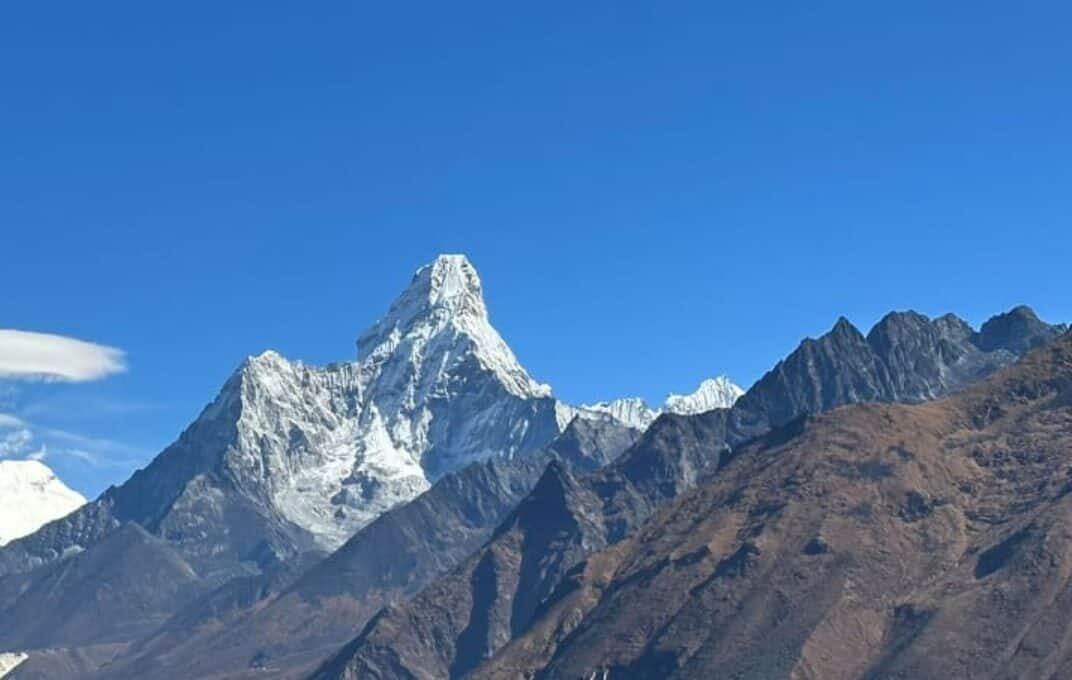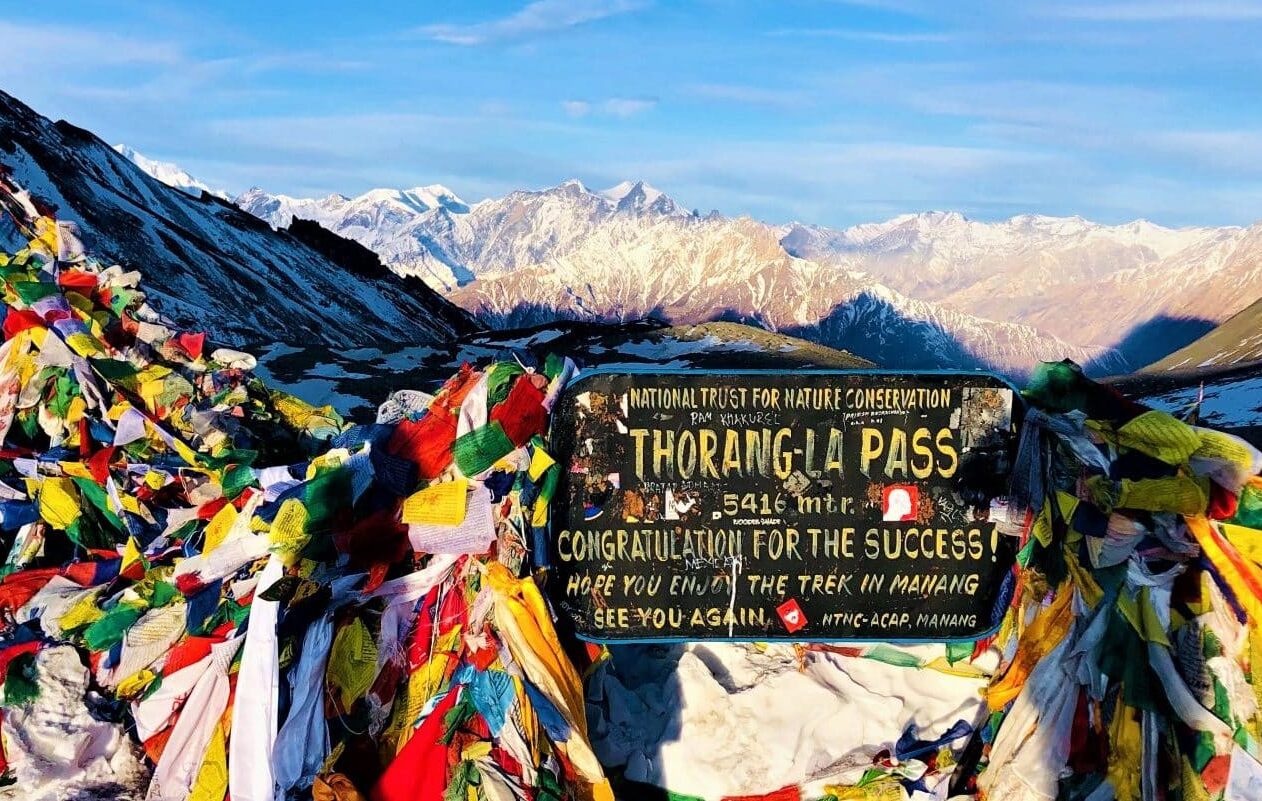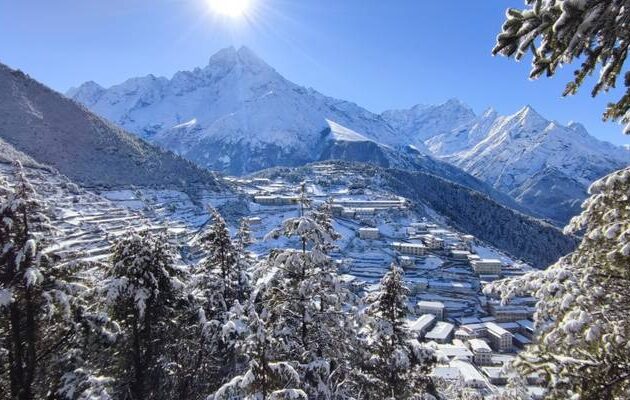Nepal, known for its stunning Himalayan peaks and challenging treks in Nepal, is a top destination for trekkers. This country offers a wide range of trekking experiences, from moderate to extremely challenging. Treks in Nepal offer more than just adventure. They also provide trekkers with breathtaking landscapes, rich cultural experiences, and a chance to connect with nature at its most raw. For thrill-seekers, the country’s high-altitude trekking routes are a significant draw. These treks, known for their difficulty, challenge both physical endurance and mental strength. Adventure enthusiasts from around the globe come to Nepal to test themselves against its rugged terrain.
In this guide, we will explore most challenging treks in Nepal, describe what to expect, and provide tips for preparation. Each trek offers a unique adventure and unforgettable memories for those who are prepared for the challenge.
Everest Base Camp Trek
The Everest Base Camp Trek remains one of the most famous treks in Nepal. Many trekkers dream of standing at the base of the world’s tallest mountain. The trek takes you through the beautiful Khumbu region, offering stunning views of Everest and surrounding peaks. The entire journey covers around 130 kilometers and takes about 12 to 14 days. Each day involves long hours of walking through diverse landscapes.
Key Highlights:
- Altitude: The highest point of this trek is Everest Base Camp, located at 5,364 meters above sea level.
- Challenges: The trek’s high altitude poses a significant challenge. Altitude sickness is a serious concern for many trekkers.
- Notable Stops: Along the route, trekkers pass through famous places like Namche Bazaar, Tengboche Monastery, and Gorakshep.
Trekkers should be well-prepared physically. The terrain becomes more challenging as you ascend, and the air gets thinner. Despite these challenges, the sense of accomplishment and the view of Everest make it all worthwhile.
Annapurna Circuit Trek
The Annapurna Circuit Trek is another popular, yet challenging trek in Nepal. This trek covers a distance of around 160 to 230 kilometers, depending on the starting point. The trail circles the Annapurna massif, offering incredible views of snow-capped mountains. One of the highlights of this trek is crossing the Thorong La Pass at 5,416 meters. This is one of the highest trekking passes in the world.
Key Highlights:
- Altitude: The highest point, Thorong La Pass, stands at 5,416 meters.
- Challenges: The trek involves long walking days, steep ascents, and unpredictable weather.
- Scenery: Trekkers experience a wide range of landscapes, from tropical forests to alpine deserts.
While the trek is demanding, the variety of landscapes and the cultural richness of the Annapurna region make it a favorite among trekkers. The physical effort is rewarded with breathtaking mountain views and an immersive cultural experience.
Manaslu Circuit Trek
The Manaslu Circuit Trek is perfect for trekkers looking for a more remote experience. This trek circles Mount Manaslu, the eighth-highest mountain in the world. The trek spans approximately 177 kilometers and takes around 15 to 20 days. The remote location of the trek means that trekkers encounter fewer crowds, but the physical demands are high.
Key Highlights:
- Altitude: The highest point is the Larkya La Pass, sitting at 5,106 meters.
- Challenges: Trekkers face steep ascents, high altitudes, and sometimes rough weather conditions.
- Cultural Experience: The trail passes through traditional villages, offering glimpses of the region’s Tibetan-influenced culture.
Trekkers need a good level of fitness and preparation to complete the Manaslu Circuit Trek. However, the rewards include spectacular mountain views and a sense of adventure in one of Nepal’s less-traveled regions.
Kanchenjunga Base Camp Trek
The Kanchenjunga Base Camp Trek is one of Nepal’s most challenging and remote treks. It takes you to the base of Kanchenjunga, the third-highest mountain in the world. This trek is suited for experienced trekkers looking for solitude and adventure. The trail is long, covering around 220 kilometers, and it takes about 20 to 24 days to complete.
Key Highlights:
- Altitude: Trekkers reach a height of 5,143 meters at the North Base Camp.
- Challenges: The remoteness and lack of infrastructure make this trek physically demanding.
- Wildlife: The Kanchenjunga region is rich in biodiversity. You may spot red pandas and snow leopards.
The isolation of this trek, combined with the rugged terrain, makes it a tough challenge. However, the experience of trekking through such pristine wilderness and the chance to stand at the base of Kanchenjunga make it incredibly rewarding.
Makalu Base Camp Trek
The Makalu Base Camp Trek is a strenuous trek that takes you to the base of Mount Makalu, the world’s fifth-highest peak. This trek is characterized by steep climbs, rough terrain, and long trekking days. The total distance covered is around 120 kilometers, and the trek takes about 16 to 22 days to complete.
Key Highlights:
- Altitude: The highest point is Makalu Base Camp at 5,250 meters.
- Challenges: Trekkers face steep ascents, rocky terrain, and unpredictable weather conditions.
- Barun Valley: The trek passes through the stunning Barun Valley, known for its diverse landscapes.
Trekkers must be physically fit and well-prepared to handle the rigors of the Makalu Base Camp Trek. The sense of isolation and the breathtaking views of Makalu and its surrounding peaks make this trek a truly unforgettable experience.
Dhaulagiri Circuit Trek
The Dhaulagiri Circuit Trek is one of the most difficult treks in Nepal. This trek takes you around Mount Dhaulagiri, the seventh-highest mountain in the world. The trek is known for its extreme challenges, including crossing glaciers and high mountain passes. The total distance of the trek is approximately 160 kilometers and takes around 18 to 21 days.
Key Highlights:
- Altitude: The trek reaches a height of 5,360 meters at French Pass.
- Challenges: The trek involves crossing icy glaciers, dealing with technical terrain, and enduring harsh weather.
- Wilderness Experience: The Dhaulagiri Circuit is one of the most remote treks in Nepal, with few trekkers and limited infrastructure.
This trek requires a high level of physical fitness and technical trekking skills. For experienced trekkers, the Dhaulagiri Circuit offers an unparalleled wilderness experience, with the challenge of navigating some of the toughest terrain in the Himalayas.
Upper Dolpo Trek
The Upper Dolpo Trek takes trekkers through one of Nepal’s most remote and culturally rich regions. This trek is known for its long distances, high altitudes, and stunning landscapes. The trek covers around 200 kilometers and takes approximately 24 to 30 days to complete. It is one of the least visited treks in Nepal, offering solitude and a deep cultural experience.
Key Highlights:
- Altitude: The highest point is the Numa La Pass at 5,190 meters.
- Challenges: The trek involves long walking days, steep ascents, and extreme altitude.
- Cultural Experience: The Upper Dolpo region is home to ancient Tibetan Buddhist communities, and trekkers can explore traditional monasteries.
Trekkers need to be prepared for the physical and mental challenges of this remote trek. However, the beauty of the landscapes and the rich cultural experiences make it one of Nepal’s most rewarding treks.
Gokyo Lakes and Cho La Pass Trek
The Gokyo Lakes and Cho La Pass Trek offers a challenging alternative to the Everest Base Camp Trek. The trek is known for its stunning views of the turquoise Gokyo Lakes and the mighty Cho La Pass. The trek covers around 130 kilometers and takes 14 to 16 days.
Key Highlights:
- Altitude: Trekkers reach the summit of Gokyo Ri at 5,357 meters.
- Challenges: The ascent to Cho La Pass is steep and physically demanding.
- Scenic Beauty: The Gokyo Lakes are a highlight, offering stunning views of turquoise waters surrounded by towering peaks.
This trek is ideal for trekkers looking to experience the Everest region without the crowds of the base camp route. The views and the challenge of crossing Cho La Pass make it an unforgettable experience.
Three Passes Trek
The Everest Three Passes Trek is one of the most challenging treks in Nepal. This trek involves crossing three high mountain passes: Kongma La, Cho La, and Renjo La. The trek covers a distance of about 166 kilometers and takes 18 to 21 days to complete.
Key Highlights:
- Altitude: The highest point is Kongma La at 5,535 meters.
- Challenges: Trekkers must cross three passes, all above 5,000 meters, making this trek physically demanding.
- Scenery: The trek offers stunning views of Everest, Lhotse, Makalu, and Cho Oyu.
Trekkers need to be physically fit and well-prepared to handle the high altitude and long trekking days. The Three Passes Trek offers an incredible adventure for those ready for the challenge.
Tsum Valley and Manaslu Trek
The Tsum Valley and Manaslu Circuit Trek is a combination of cultural immersion and high-altitude adventure. The Manaslu Circuit is already a challenging trek, but adding the sacred Tsum Valley makes the experience even more enriching. The trek takes you through remote Himalayan villages that remain relatively untouched by modern development. It covers a distance of around 250 kilometers, taking about 21 to 25 days.
Key Highlights:
- Altitude: The highest point is Larkya La Pass at 5,106 meters.
- Challenges: Trekkers face high-altitude challenges, steep climbs, and rough terrain.
- Cultural Richness: The Tsum Valley is steeped in Tibetan Buddhist culture. You will pass ancient monasteries and traditional villages.
This trek is perfect for trekkers seeking both a physically demanding adventure and a deeper cultural experience. The trail’s remote location and the combination of high-altitude challenges make it a unique and rewarding trek.
Physical and Mental Preparation for Challenging Treks in Nepal
Embarking on any of these challenging treks requires thorough physical and mental preparation. High-altitude trekking is demanding, and physical fitness is crucial. However, mental resilience is equally important to cope with the harsh conditions and long trekking days.
Key Preparation Tips:
- Endurance Training: Regular endurance exercises such as hiking, jogging, and cycling should be part of your routine. Long-distance hiking with a loaded backpack simulates the physical demands of trekking.
- Altitude Acclimatization: Gradual exposure to higher altitudes helps prevent altitude sickness. Many trekkers choose to spend extra days acclimatizing at key points.
- Strength Training: Build strength in your legs, core, and upper body. Exercises like squats, lunges, and planks can help prepare your muscles for the demands of trekking.
- Mental Resilience: Trekking can be exhausting, and harsh weather conditions or physical discomforts may test your mental toughness. Practices like mindfulness and staying focused on small goals can help you stay mentally strong.
- Proper Nutrition: Eating a balanced diet with a focus on proteins and carbohydrates will help build endurance. During the trek, pack lightweight, nutrient-dense foods like nuts and energy bars.
- Rest and Recovery: Include adequate rest days in your training to allow your body to recover. Listen to your body and avoid overtraining before your trek.
The key to a successful trekking experience is to balance physical readiness with a strong mental attitude. Both are equally essential to overcome the challenges that these treks present.
Safety and Health Considerations for Challenging Treks in Nepal
Trekking at high altitudes comes with certain health risks, the most common being Acute Mountain Sickness (AMS). AMS occurs when the body cannot adapt to the lower oxygen levels at higher altitudes. It is important to recognize the symptoms and take immediate action to prevent more serious conditions.
Common Symptoms of AMS:
- Headaches
- Dizziness or light-headedness
- Fatigue
- Loss of appetite
- Nausea or vomiting
Preventive Measures:
- Ascend Gradually: Avoid rapid ascents and allow your body time to acclimatize. Plan extra rest days at key altitudes.
- Stay Hydrated: Drink plenty of water throughout your trek. Dehydration can worsen the effects of AMS.
- Eat Properly: Maintain a balanced diet to keep your energy levels up. High-carb meals are especially helpful at high altitudes.
- Avoid Alcohol: Alcohol can dehydrate you and impair your ability to acclimatize.
- Take Medication: Some trekkers choose to take medications such as Diamox to help prevent AMS. Consult your doctor before starting any medication.
Having a qualified guide is essential. Guides can assess your condition and provide valuable assistance in emergencies. They also carry oxygen supplies or recommend descending to lower altitudes if AMS symptoms worsen.
Environmental and Cultural Respect for Challenging Treks in Nepal
Trekking in Nepal’s remote regions offers a unique opportunity to explore unspoiled environments and deeply rooted cultures. However, trekkers must act as responsible travelers by respecting the environment and the people who call these places home.
Environmental Guidelines:
- Leave No Trace: Carry out all your waste, and avoid littering the trails. Use biodegradable products when possible.
- Avoid Plastic: Try to minimize the use of plastic bottles. Bring a reusable water bottle and water purification tablets or filters.
- Protect Wildlife: Do not disturb local wildlife, and avoid feeding animals. Respect the natural environment and ecosystems.
- Stick to Trails: Follow marked trails to prevent damage to fragile environments.
Cultural Guidelines:
- Respect Local Customs: Learn about the cultural norms of the regions you are visiting. For instance, in some villages, pointing your feet toward a person or religious structure is considered disrespectful.
- Dress Modestly: Wear modest clothing, especially when visiting monasteries or religious sites.
- Support Local Economies: Buy locally made products and hire local guides or porters. This helps support the local economy and empowers the community.
- Ask Before Taking Photos: Always ask permission before photographing people, particularly in rural areas where some individuals may feel uncomfortable being photographed.
By following these guidelines, you can ensure that your trekking experience is both environmentally sustainable and culturally respectful. Nepal’s beauty is not only in its landscapes but also in its people and their traditions.
Conclusion
Trekking in Nepal offers some of the most challenging yet rewarding adventures on the planet. From the iconic Everest Base Camp Trek to the remote wilderness of Upper Dolpo, each trek provides its unique set of challenges and experiences. These treks are not just physically demanding but also mentally enriching, as they take you through awe-inspiring landscapes and immerse you in the local culture.
Preparation is key to conquering these treks. With the right physical training, mental resilience, and respect for the environment and local cultures, you can successfully complete some of the toughest trekking routes in Nepal. These treks will push you to your limits but will leave you with unforgettable memories and a deep appreciation for Nepal’s natural beauty.
Whether you are crossing the high mountain passes of the Three Passes Trek or standing at the base of Mount Makalu, Nepal’s challenging treks are truly life-changing experiences. If adventure calls, be sure to answer it in 2024 by embarking on one of these incredible treks.



